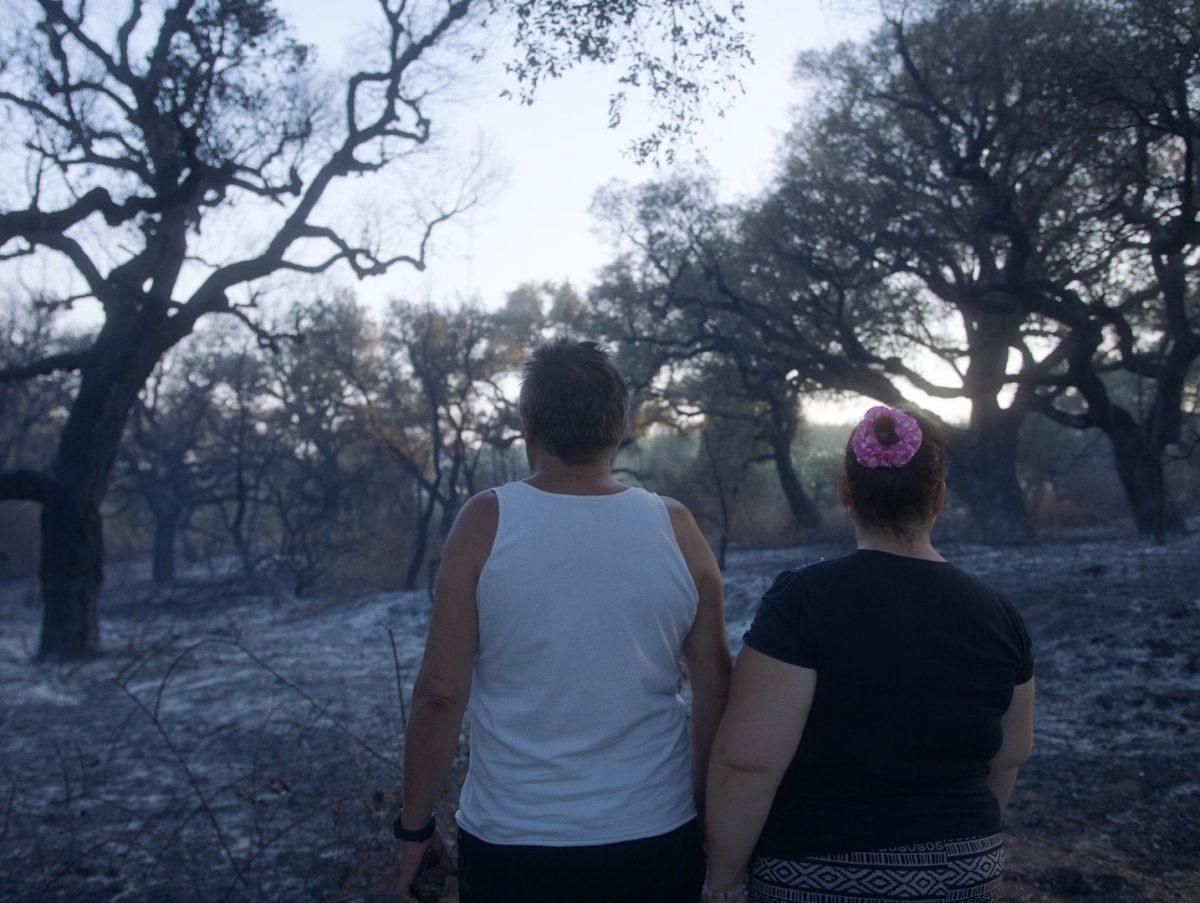
Director Francesca Scalisi’s documentary examines the nature of family life, with the backdrop of societal tension
“Valentina and the MUOSters” never explains what MUOS actually stands for.
Mobile User Objective System or MUOS is a communications system used by the United States Navy for a variety of purposes. But the exact meaning is not important to the documentary — it’s the impact MUOS has had on the people of Niscemi, Sicily that matters.
“Valentine and the MUOSters” premiered in April 2024 at the Vision du Reel film festival in Switzerland, and had its U.S. debut at True/False Film Fest on Feb. 27. At its core, director Francesca Scalisi’s documentary is an exploration of family.
26-year-old Valentina still lives with her mother and ailing father, and grapples with the constant backdrop of the American and Italian military and the history of protest against the MUOS.
Scalisi treats the MUOS as a constant menacing force. The enormous satellite array is treated as an almost alien system, with an ominous hum playing in the background of nearly every shot it is in. Repeated shots of its eerie red lights coming into focus at night make the dishes and towers clearly a threat to the surrounding citizens, which, as it turns out, it is.
One of the most poignant scenes consists of a doctor informing Valentina and her father that his pacemaker is being affected by the electromagnetic waves from the communications installation, turning the undefined threat of the MUOS into a very personal and real one.
Valentina assists with the driving and gardening in the household, while regularly crocheting flowers throughout the film. She is sensitive and kind hearted, frequently bursting into tears during family arguments, or at environmental destruction. A particularly moving scene happens when Valentina’s father comforts her while she cries at the sight of a burning tree.
Valentina’s parents are often critical of Valentina’s assistance, particularly her poor driving skills, and often cast doubt on her desire to have a life and job for herself. Despite this, Scalisi portrays the house as being loving at its core, but the film still makes it very clear that Valentina needs to begin finding some independence for herself, with several scenes emphasizing her desire to work at a restaurant.
She is contrasted with her sister, who comes to stay with the family during the middle of the documentary. While there, she suggests to the family that they come live in the city, but they refuse, stating that it would be too expensive for them. The sister also suggests to Valentina that she could consider getting a job, but Valentina is reluctant as well and feels she needs to take care of her father, whose health is a constant concern throughout the film.
The film is composed beautifully. The cinematography exists in an odd space of being simultaneously unobtrusive most of the time. Nearly every shot is remarkable, making it feel like the viewers themselves could be standing there. To some extent, this could be credited to the Sicillian landscape, which is harsh and dry, yet also visually stunning.
The film uses natural lines in many scenes — the towers in the MUOS are often dropped straight in the middle of the frame, drawing the eye to their noticeably awkward placement.
A handful of shots of local insects provide an intriguing bit of motion to the film. The sound design is equally interesting. Even when the MUOS is not on screen, there is still frequently a hum in the background, reminding the audience of its presence.
Despite the often muted tone of “Valentina and the MUOSters,” Scalisi ends on a hopeful note, calling back to a recurring flower motif throughout the documentary. There is certainly a layer of complexity to the ending, and it is not necessarily happy. This is a complicated family. Though they love each other, they are not necessarily acting for their best interests. In that regard, the film succeeds by portraying these people and their environment realistically, and Scalisi has created a fantastic documentary with which she depicts them.
You can keep up with The Maneater’s 2025 True/False Film Fest coverage here.
Edited by Matthew Jacobi | [email protected]
Copyedited by Hannah Taylor | [email protected]
Edited by Emily Skidmore | [email protected]